The Doobie Brothers – Listen To The Music (Reprise) [Live 2018 From The Beacon Theater]
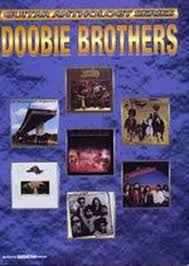
Browse in the Library:
| Artist or Composer / Score name | Cover | List of Contents |
|---|---|---|
| Astor Piazzola Oblivion Guitar Arr. By Nadja Kossinskaja |
 |
Piazzola Oblivion Guitar arr. by Nadja Kossinskaja page 1-1 |
| Astor Piazzolla 12 Tangos Piano |
 |
|
| Astor Piazzolla 6 Tangos |
 |
Astor Piazzolla 6 Tangos |
| Astor Piazzolla Angel (Complete) For Piano (Different Version) |
 |
Astor Piazzolla Angel (Complete) For Piano (Different Version) |
| Astor Piazzolla Ave Maria (Piano) |
 |
|
| Astor Piazzolla Balada Para Un Loco (Cacho Tirao) Guitar |
 |
|
| Astor Piazzolla Maria De Buenos Aires, Opera Tango (Partitura completa) |
 |
|
| Astor Piazzolla Milonga Del Angel (Piano Solo) Arranged By Prof. John Mortensen Slow Tango |
 |
|
| Astor Piazzolla Milonga Del Angel (Piano Solo) Original |
 |
|
| Astor Piazzolla sheet music Le Grand Tango Score For Viola And Piano |
 |
|
| Astor Piazzolla Vuelvo al sur (piano) |
 |
|
| Astor Piazzolla – 5 piezas para guitarra (guitar sheet music) | Astor Piazzolla – 5 piezas para guitarra (guitar sheet music) | |
| Astor Piazzolla – Picasso (Tango) Piano |
 |
|
| Astor Piazzolla 4 Estaciones Porteñas Guitar arr. |
 |
|
| Astor Piazzolla Nightclub 1960 Duo Flute Guitar |
 |
|
| Astor Piazzolla – Adios Nonino (Two Pianos) | Astor Piazzolla – Adios Nonino (Two Pianos) | |
| Astor Piazzolla – Adiós Nonino (guitar sheet music) |
 |
|
| Astor Piazzolla – Adios Nonino Piano Solo |
 |
|
| Astor Piazzolla – Album No. 1 |
 |
Astor Piazzolla album no 1 |
| Astor Piazzolla – Album No. 2 |
 |
Astor Piazzolla – Album No. 2 |
| Astor Piazzolla – Album No. 4 |
 |
Astor Piazzolla – Album No. 4 |
| Astor Piazzolla – Buenos Aires Hora Cero | Astor Piazzolla – Buenos Aires Hora Cero | |
| Astor Piazzolla – Chau Paris (piano) | Astor Piazzolla – Chau Paris (piano) | |
| Astor Piazzolla – Complete Works – Obras Para Piano Y Varios Instrumentos (partituras, sheet music) | Astor Piazzolla – Complete Works – Obras Para Piano Y Varios Instrumentos (partituras, sheet music) | |
| Astor Piazzolla – Contrastes (Piano) | Astor Piazzolla – Contrastes (Piano) | |
| Astor Piazzolla – Coral (Piano) | Astor Piazzolla – Coral (Piano) | |
| Astor Piazzolla – Estaciones Porteñas for piano – für Klavier |
 |
Astor Piazzolla – Estaciones Portenas fur Klavier |
| Astor Piazzolla – Fuga 9 (Piano) | Astor Piazzolla – Fuga 9 (Piano) | |
| Astor Piazzolla – Invierno Porteno (guitar sheet music) |
 |
|
| Astor Piazzolla – Invierno porteño [clarinet-piano] |
 |
|
| Astor Piazzolla – La Muerte Del Angel (Guitar arr. sheet music) |
 |
|
| Astor Piazzolla – Libertango (Part A – Guitar Arr.) (Musescore File).mscz | ||
| Astor Piazzolla – Libertango for 2 pianos | Astor Piazzolla – Libertango 2KL | |
| Astor Piazzolla – Los pajaros perdidos (canción) piano vocal |
 |
|
| Astor Piazzolla – Milonga Del Angel (guitar arr. sheet music) |
 |
|
| Astor Piazzolla – Milonga del angel (Piano solo) |
 |
Astor Piazzolla – Milonga del angel |
| Astor Piazzolla – Oblivion (piano solo ver.) | Astor Piazzolla – Oblivion (piano solo sheet music) | |
| Astor Piazzolla – Oblivion (piano solo) |
 |
|
| Astor Piazzolla – Oblivion arr. by Najda Kssinskaja (Guitar arr. sheet music with TABs) | Astor Piazzolla – Oblivion arr. by Najda Kssinskaja (Guitar arr. sheet music with TABs) | |
| Astor Piazzolla – Oblivion Cello & piano | Piazzolla Oblivion cello piano arr. | |
| Astor Piazzolla – Oblivion for Piano solo sheet music (partitura) |
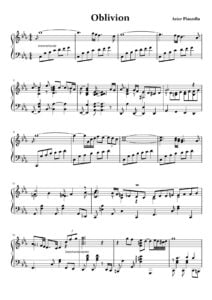 |
|
| Astor Piazzolla – Onda Nueve (Tango) Piano | Astor Piazzolla – Onda Nueve (Tango) Piano | |
| Astor Piazzolla – Otoño Porteño (guitar sheet music) | Astor Piazzolla – Otoño Porteño (guitar sheet music) | |
| Astor Piazzolla – Piano SongBook (Angel, Libertango, 6 Tangos, Estaciones Porteñas) |
 |
|
| Astor Piazzolla – Preludio 9 (Piano) | Astor Piazzolla – Preludio 9 (Piano) | |
| Astor Piazzolla – Río Sena (Tango) Piano | Astor Piazzolla – Río Sena (Tango) Piano | |
| Astor Piazzolla – Romanza del Duende (Piano) | Astor Piazzolla – Romanza del Duende (Piano) | |
| Astor Piazzolla – sheet music – Suite del Angel (Piano) |
 |
|
| Astor Piazzolla – Soledad (Solitude) Full score sheet music | Astor Piazzolla – Soledad (Solitude) Full score sheet music (first page) | |
| Astor Piazzolla – Suite Troileana 2 guitars (Bandoneon, Zita, Whisky, Escolaso) |
 |
|
| Astor Piazzolla – Suite Troileana 2 guitars arr. Sergio Assad (Bandoneon, Zita, Whisky, Escolaso) |
 |
|
| Astor Piazzolla – Suite Troileana arr for Piano (Bandoneon, Zita, Whisky, Escolaso) |
 |
|
| Astor Piazzolla – Tangos for 2 Pianos |
 |
Astor Piazzolla – Tangos for 2 Pianos |
| Astor Piazzolla – Tangus Dei (Piano) |
 |
|
| Astor Piazzolla – The Last Tango Music Of Guitar arr. |
 |
|
| Astor Piazzolla – Tristango (Piano) | Astor Piazzolla – Tristango (Piano) | |
| Astor Piazzolla – Vuelvo Al Sur (10 tangos and other pieces arr. piano) |
 |
Astor Piazzolla – Vuelvo Al Sur |
| Astor Piazzolla -Four, For Tango – Score |
 |
|
| Astor Piazzolla (Spanish Español Ed. 2018 El Ateneo 2020) (María Susana Azzi) Biography Book |
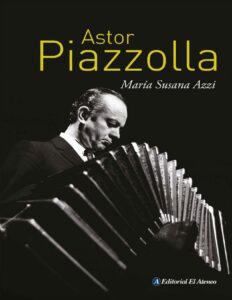 |
|
| Astor Piazzolla (Tango) Balada Para Un Loco – Guitar (letra Horacio Ferrer) |
 |
|
| Astor Piazzolla 100 Años Edicion Aniversario Sus mejores obras para piano |
 |
Astor Piazzolla 100 Años Edicion Aniversario Sus mejore obras para piano |
| Astor Piazzolla 25 Tangos for Clarinet and piano Clarinet Part in Bb |
 |
Astor Piazzolla 25 Tangos for Clarinet and piano Clarinet Part in Bb |
| Astor Piazzolla 28 tangos arranged For Piano |
 |
Astor Piazzolla 28 tangos arranged For Piano |
| Astor Piazzolla Album 20 compositions arr. for Piano |
 |
Piazzolla album |
| Astor Piazzolla Ave Maria (Piano and voice) |
 |
|
| Astor Piazzolla Cinco Piezas For Guitar |
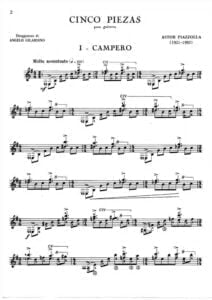 |
|
| Astor Piazzolla Color de Buenos Aires Suite letra Horacio Ferrer |
 |
|
| Astor Piazzolla Contrabajeando Double Bass And Piano Contrabajo Y Piano |
 |
|
| Astor Piazzolla Extasis Piano (Tango) |
 |
|
| Astor Piazzolla Flute or Violin Piano Collection |
 |
|
| Astor Piazzolla For Violin And Guitar (Astor Piazzolla) |
 |
Astor Piazzolla For Violin And Guitar (Astor Piazzolla)_compressed |
| Astor Piazzolla Guitar compositions Collection (Guitarra) sheet music, partituras | Astor Piazzolla Guitar compositions (Guitarra) sheet music, partituras | |
| Astor Piazzolla Horacio Ferrer Chiquilin De Bachin Piano vocal |
 |
|
| Astor Piazzolla La Muerte Del Angel Trio Violin Cello Piano Score |
 |
|
| Astor Piazzolla Le Grand Tango – Two Pianos | Astor Piazzolla Le Gran Tango – Two Pianos | |
| Astor Piazzolla Libertango (Guitar Solo Arr.) With Tab |
 |
|
| Astor Piazzolla Milonga Del Àngel (For Chamber Orchestra) Tangos |
 |
|
| Astor Piazzolla Oblivion (piano solo) |
 |
|
| Astor Piazzolla Oblivion arr. for 2 violins |
 |
|
| Astor Piazzolla Oblivion for Violin or Flute Cello Piano | Astor Piazzolla Oblivion for Violin or Flute Cello Piano | |
| Astor Piazzolla Oblivion Trans Solo Piano | Astor Piazzolla Oblivion Trans Solo Piano sheet music pdf | |
| Astor Piazzolla Oblivion Violin Guitar |
 |
|
| Astor Piazzolla Obras Completas Guitarra For Guitar |
 |
Astor Piazzolla Obras Completas For Guitar |
| Astor Piazzolla Piano Collection |
 |
Astor Piazzolla Piano Collection |
| Astor Piazzolla Piano Meditango |
 |
|
| Astor Piazzolla Romance Del Diablo Flauta Violin and Piano |
 |
|
| Astor Piazzolla Sensuel Piano |
 |
|
| Astor Piazzolla Tangazo for Orchestra Variaciones sobre Buenos Aires para orquestra |
 |
|
| Astor Piazzolla Tango Etudes (for flute or Violin) | Astor Piazzolla Tango Etudes (for flute or Violin) | |
| Astor Piazzolla Tango S V P For Violin Ensemble Solo | Astor Piazzolla Tango S V P For Violin Ensemble Solo | |
| Astor Piazzolla Tangos Arr Phillip Keveren The Phillip Keveren Series Piano Solo |
 |
Astor Piazzolla Tangos Arr Phillip Keveren The Phillip Keveren Series Piano Solo |
| Astor Piazzolla Tanti Anni Prima Ave Maria For Piano solo |
 |
|
| Astor Piazzolla Tanti Anni Prima Ave Maria Violin and Piano |
 |
|
| Astor Piazzolla Vuelvo Al Sur Flute or Violin and Piano | Astor Piazzolla Vuelvo Al Sur Flute or Violin and Piano | |
| Astor Piazzolla y Anibal Troilo- Contrabajeando (Tango) Piano | Astor Piazzolla y Anibal Troilo- Contrabajeando (Tango) Piano | |
| Atlantic Starr – Always | ||
| Atomic Kitten – The Tide Is High | ||
| Atomic The Musical By Philip Foxman And Danny Ginges Piano Vocal Score |
 |
|
| Atonement – Dario Marianelli (For Piano) |
 |
Atonement – Dario Marianelli (For Piano) |
| Au Clair De La Lune – Traditional (Musescore File).mscz | ||
| Audioslave Out Of Exile Guitar TABs |
 |
Audioslave Out Of Exile Guitar TABs |
| Audition (The Fools who Dream) La La Land OST | ||
| Audra Mcdonald Build A Bridge (Songbook) (Audra Mcdonald) Piano Vocal Guitar chords |
 |
Audra Mcdonald Build A Bridge (Songbook) (Audra Mcdonald) Piano Vocal Guitar chords |
| Augustana – Boston | ||
| Aura Lee (intermediate great jazz arrangement) G. Poulton | Aura Lee Jazz | |
| Aura Lee By G. Poulton Jazz Arrangement.mxl | ||
| Aura Lee G. Poulton (Easy version ) | Aura Lee Easy version | |
| Aura Lee Jazz (Musescore File).mscz | ||
| AURORA Conqueror Piano Solo arr. |
 |
|
| AURORA Running With The Wolves |
 |
|
| Aurora – Cure For Me |
 |
|
| AURORA Forgotten Love Piano with lyrics |
 |
|
| AURORA Half The World Away Sheet Music Piano Vocal Guitar chords |
 |
|
| AURORA Into The Unknown from Disney’s Frozen |
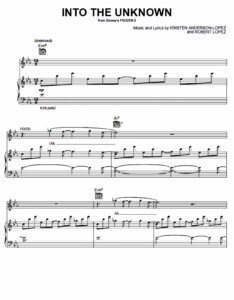 |
|
| AURORA It Happened Quiet Piano Solo arr. |
 |
|
| AURORA Runaway Piano Vocal guitar Chords |
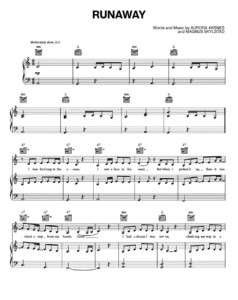 |
|
| AURORA Songbook Sheet Music Anthology Collection | AURORA Songbook Sheet Music Anthology Collection | |
| AURORA The River Aurora Piano Solo arr. |
 |
|
| Automatic Harmonic Analysis of Jazz Chord Progressions Using a Musical Categorial Grammar (Mark Wilding) | Automatic Harmonic | |
| Autour Du Jazz Guitar 4 pièces pour guitare (Thierry Tisserand) |
 |
Autour Du Jazz Guitar 4 pièces pour guitare (Thierry Tisserand) Contents — autour du jazz |
Best site for sheet music download is right HERE!
The Doobie Brothers (official site)
Born out of Northern California’s chaotic, late-1960s musical stew, The Doobie Brothers’ rugged, real and authentic approach to rock and roll made them biker bar stalwarts. But their self-titled debut album in ’71 went beyond just leather and motorcycles, revealing even more musical layers; sweet three-part harmonies and rootsy, introspective, acoustic flavors.
The Doobie Brothers’ legacy has been built upon not just hit records, but also an unrivaled commitment to musical integrity and a steadfast allegiance to their enthusiastic fan base. The bands ability to evolve in a constantly changing industry and connections to generations of listening audiences is a testament to their craft.
It all began in 1969, when a drummer named John Hartman arrived in Northern California. He was there to meet Skip Spence from the band Moby Grape and become part of a supposed band reunion that never quite got off the ground. But it wasn’t all for naught. Spence (who had also played in the Jefferson Airplane) introduced Hartman to his friend Tom Johnston, a local singer/songwriter/guitarist -and they connected. Hartman and Johnston began playing local Bay Area bars. They soon met singer/guitarist Pat Simmons, whose finger-style playing richly complimented Johnston’s R&B strumming-style, and the foundation for The Doobie Brothers was set.
While their debut album in 1971 did not chart, just a year a later, their second record, Toulouse Street, became a breakout sensation. Producer Ted Templeman helped the band craft a sound that was organic, yet radio friendly, and brought in Little Feat keyboardist Bill Payne to add unique musical textures.
From there The Doobies hit the road, tirelessly working their way around the world. They established themselves with a breathtaking run of hits on Warner Bros. Records that tapped into a myriad of American styles. “Listen to the Music,” “Jesus is Just Alright,” “China Grove,” “Black Water,” “Rockin’ Down the Highway,” “Long Train Runnin’” and other anthemic singles confirmed their status as fine craftsman who could also rock arenas.
In 1974, Steely Dan co-lead guitarist and session legend Jeff “Skunk” Baxter joined the band as third guitarist, one of many unique and talented players who would revolve in and out of the band over the years. The group’s expanded lineup was augmented in 1975 by Michael McDonald, whose soulful vocals and songwriting led to the hits “What a Fool Believes,” “Minute by Minute,” “Takin’ It To The Streets,” and “You Belong To Me.” Multi-instrumentalist and vocalist, John McFee, joined in 1978 bringing his wide range of musical styles and experience recording with Van Morrison, Steve Miller, Elvis Costello, and The Grateful Dead to The Doobies’ sound.
The collaborative, almost communal sense of family within the band allowed them to stay fresh and unpredictable over the years, while never forsaking their deep American musical roots, boogie-jams and all.
After a respite in the early 80s, the band reunited in 1987 for a series of gigs benefiting veterans’ groups and children’s charities (ultimately raising millions). Those shows at the Hollywood Bowl were the fastest sell-outs since the Beatles had played there more than 20 years earlier. In a Los Angeles Times poll the year before, fans voted Led Zeppelin and The Doobie Brothers the bands they wanted most to see reunite.
Continuing to record, The Doobies released World Gone Crazy in 2010, produced by Ted Templeman, and Southbound on Arista Nashville in 2014. Southbound, produced by David Huff, featured new recordings of the band’s iconic hits, with country music’s biggest stars including Blake Shelton, Zac Brown Band, Brad Paisley, and Toby Keith.
The Doobie Brothers were inducted into the Vocal Group Hall of Fame in 2004, have won four GRAMMY® Awards and sold more than 48 million records worldwide (including three multi-platinum, seven platinum, and 14 gold albums). Their 1976 Best of the Doobies has sold more than 12 million copies, earning rare RIAA Diamond status. Their No. 1 gold-certified singles “Black Water” (1974) and “What a Fool Believes” (1979) lead a catalog of hits that includes “Listen to the Music,” “Jesus Is Just All Right,” “Rockin’ Down the Highway,” “Long Train Runnin’,” “China Grove,” “Take Me In Your Arms,” Takin’ It to the Streets,” “Minute by Minute,” “You Belong to Me,” and “The Doctor.” In all, The Doobies have tallied five Top 10 singles and 16 Top 40 hits.
“We’re basically an American band – we cover a lot of areas,” says Johnston. “We cover blues, R&B, country, bluegrass, and rock ‘n’ roll. It’s based on rhythms, rhythm structures, picking, and harmonies. That’s been the signature of the band.” He continues, “You take Pat, who comes from a folk/blues background, with a lot of picking and stuff like that; he was a big fan of Rev. Gary Davis and Dave Van Ronk. I come from a blues, soul, R&B, and rock ‘n’ roll background. Then you stick John McFee into that mix. John came from a country background when he started out and was in the country band Southern Pacific. And he is a session musician – he’s played with everybody from Steve Miller to Van Morrison to Elvis Costello. If it’s got strings, he can play it.”
“We all have the same work ethic,” says multi-instrument virtuoso McFee, self-described as the “new guy.” “Tom, Pat and I are still surging ahead. We’ve stayed together as friends as well as musicians. We are compelled to challenge ourselves. I mean, I love playing the old songs. But when we’re working on new material now, I think we’re coming up with better parts. The band has always been good, so it’s kind of like we’re competing with ourselves. But honestly, we’re playing better than ever.”
Simmons notes, “We didn’t really sit around and think, ‘Oh, we need this element or that element.’ The music has always been an honest representation of whatever we happen to be working on at the time. We had all been playing music for a long time before we put the band together, and our roots influences are what come out. Those influences always overtake whatever conceptual ideas you might have. It’s always been that way with this band — you always return to who you really are.”
The ability of The Doobie Brothers’ music to connect with the essentials of people’s lives in tuneful, affecting songs has developed an audience that spans generations today. Known for their dynamic live performances, the band plays close to 100 shows a year touring worldwide, delighting concert goers of all ages.
Simmons adds, “We have a hardcore fan base that has handed our music down through the years to their children and their children’s children. Repeatedly, people go to our concerts and come up to us and say, ‘My dad turned me on to you guys years ago, and I’ve loved you guys all this time, and my kids are listening to you now.”
“And the songs that people all know, be it ‘Listen to the Music,’ ‘Black Water’ or ‘China Grove,’ are still getting played,” Johnston adds. “Any song that stands the test of time for 40 years or is getting played around the country on a daily basis – that to me is a testament to the quality of the tunes, and that they have something to say that resonates with people. I’d like to say this band has been relevant – it’s been relevant musically, it’s been relevant lyrically, and we’ve always put out a high quality of music.”
They take none of it for granted. And their music has proven to be relatable for generations since they first came together, which is why they continue to make new music. The fundamental appeal that has drawn listeners to this group for four decades may be best expressed by Simmons:
“In a certain sense, what this band has always had in common with everyone else is the word ‘hope.’ We hoped we would make some good music, and we hoped there would be some acceptance, and we hoped that things would get better in the world. In that respect, we’re just the same – we’re still hopeful about the future.”
The mere name of the band gives one hope. And it makes you think, it makes you feel, and makes you appreciate the efforts of one of America’s most dependable musical outfits. It takes you back, while also helping you look ahead.
Please, subscribe to our Library.
If you are already a subscriber, please, check our NEW SCORES’ page every month for new sheet music. THANK YOU!
